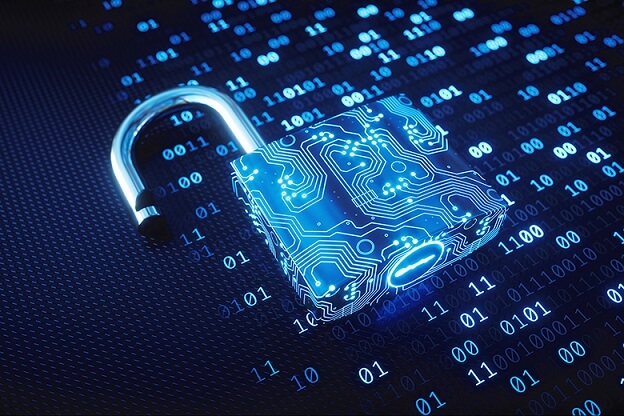There’s a noticeable sharp increase in businesses’ use of remote employee monitoring solutions. And although these tools provide valuable insights into the performance of your employees and help mitigate a variety of corporate risks, at the same time they can significantly increase the legal risk for your company.
By now, you’ve probably heard of the General Data Protection Regulation (GDPR). Still, you may not fully comprehend all of its implications. In this article we’re going to provide you with a clearer understanding of the GDPR, the steps your company needs to undertake in order to comply with it and answer the pressing question – how to implement employee monitoring while remaining GDPR-compliant.
What is General Data Protection Regulation (GDPR)?
The GDPR is a European privacy law that came into effect in May 2018. Essentially, it gives every EU citizen the right to know and decide how their personal data is being used, stored, protected, transferred and deleted.
We recommend that if your business operates in the EU or cooperates with European partners, you carry out an assessment to determine whether your operations fall under the scope of the GDPR.
To make matters easier, we’ve compiled a simplified checklist. The GDPR applies if your business meets at least one of the following criteria:
- You conduct activity in the EU
- You offer goods or services to individuals
- You monitor individual behavior (including employee monitoring)
A 2018 survey conducted by Propeller Insights asked executives which industries would be most affected by the GDPR. Most respondents (53%) saw the technology sector being most impacted. Other answers included online retailers (45%), software companies (44%), financial services (37%), and online services (34%).
Why do companies need to be GDPR-compliant?
While we must admit that complying with the GDPR is a challenging task, you need to keep in mind that you’re actually doing it to improve your business. According to a survey by Varonis Systems, 74% of those asked believe that complying with GDPR requirements is actually a competitive advantage. Sure, compliance will definitely boost your consumer confidence. Moreover, the improvements you introduce in order to meet GDPR requirements will enable you to manage and secure data more efficiently.
How to ensure GDPR compliance?
We agree, complying with GDPR regulations does sound incredibly overwhelming, however, there are certain ways to make sure you’ve taken the right approach to GDPR compliance.
We’ve compiled for you a list of four basic steps that will help you on your journey to become fully GDPR-compliant:
- Access and identify your data sources. It doesn’t really matter what technology you have – whether it’s traditional data warehouses, structured or unstructured data – you need to investigate and audit what personal data is being stored and used across your entire data landscape. To build an inventory of personal data in order to enforce comprehensive privacy rules, you absolutely have to have seamless access to all your data sources. Once you have access to all the data sources, you are to inspect them to get an understanding what personal data can be found in each of them. Not only do you need to parse and classify personal data, you also have to accommodate varying levels of data quality.
- Establish a governance model of your company. To be GDPR-compliant, privacy rules must be documented and shared across all lines of business. You need to define what personal data means and then share this understanding across your entire organization. Make sure personal data can only be accessed by those with proper rights, keeping in mind the nature of such personal data, the rights of users groups and the usage context. To achieve that, you must establish roles and definitions in a governance model, which ultimately will provide you with the required level of control.
- Set up the correct level of protection for personal data. There are three techniques that you can use in order to comply with GDPR requirements, more specifically encryption, pseudonymization and anonymization. Appropriate technique must be applied – without compromising the company’s growing needs for analysis, forecasting, querying, and reporting.
- Introduce an auditing practice. At this stage, you will need to be able to produce reports to clearly show regulators that:
- you know the type of personal data you store and its location across your data landscape;
- you manage the process for getting consent from individuals whom it concerns;
- you can prove how such personal data is used, who uses it, and for what purpose;
- you have the appropriate processes in place to manage unforeseeable events such as data breach notifications and more.
Is it possible to monitor employees in a GDPR-compliant way?
According to a 2021 GetApp survey, companies have significantly increased their spending on monitoring software since the pandemic began. Nearly a fifth of managers surveyed noted that their budgets have doubled. Interestingly, the survey also discovered that 51% of managers have admitted to overstepping their employees’ legal rights while conducting employee monitoring, with 30% doing so knowingly.
Now that we’ve covered the intricacies of making sure your company complies with GDPR requirements, you may feel a bit more confident about structuring the processes in your company. However, things get even more complicated when you make the decision to implement third-party employee monitoring software. The good news is we’ve found the perfect solution for you. If you’ve decided to get acquainted with employee monitoring solutions, we highly recommend that you give Kickidler a try.
Our rationale isn’t unsubstantiated. Main reason for Kickidler’s popularity is its extensive and all-encompassing functionality. The software helps you with such tasks as:
- monitoring the computers of your employees in real time;
- tracking the time your employees start and finish their workdays;
- conducting analysis of employee productivity (with the help of automated reports on individual employees, departments or even the whole company);
- video recording employee activity at their computers.
Essentially, Kickidler provides all the tools for supervisors to know precisely what their employees are doing at any given moment of the workday, how productive they are, and how to help them become even more efficient.
And besides all these features that substantially facilitate the supervisor’s work, Kickidler is fully GDPR-compliant as well. Keep in mind that Kickidler offers both hidden and visible versions of the software installation. So, in order to be compliant with the GDPR, we recommend that you read our post on why it’s important to make employee monitoring as transparent as possible. Additionally, to prevent the risks of personal data leakage to third parties, you can restrict access to certain features of Kickidler such as online monitoring, video screen recording and keylogging, so that only designated personnel are allowed to use it.
Finally, if you do decide to implement employee monitoring tools within your company, our final advice to you is to try and be as deliberate and as unobtrusive as possible in your monitoring.
Good luck!

 ENG
ENG 
